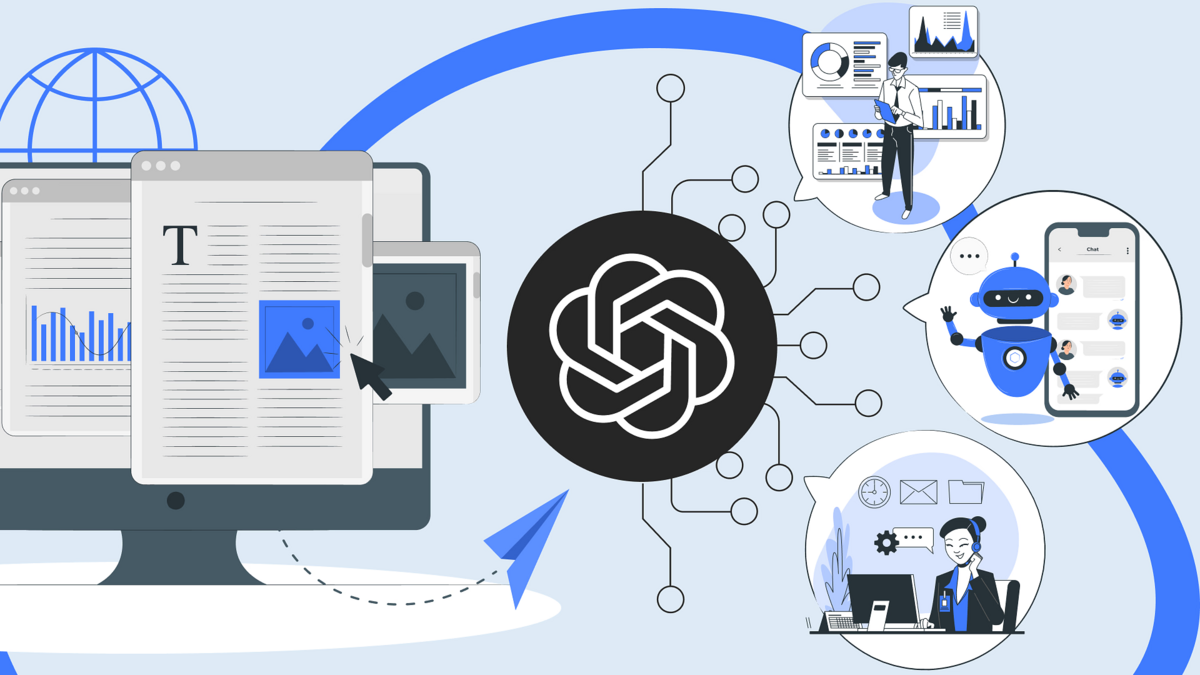For over two decades, Google has been the gatekeeper of digital visibility. B2B marketers built entire playbooks around it—targeting keywords, climbing SERP rankings, and capturing organic traffic. But the rules of discovery are changing. Rapidly.
In 2025, AI-powered search is no longer a futuristic buzzword. It's the new front door for B2B research, shortlisting, and decision-making. Buyers aren’t just searching. They’re prompting. They’re relying on conversational interfaces that deliver synthesized answers from across the web—often without a single click.
So where does that leave your content?
If it isn’t structured to be understood, quoted, or cited by AI-driven engines, it’s likely invisible.
This shift demands a reorientation—not just of content strategy, but of how visibility itself is defined.
From Ranking to Referencing: The New Visibility Standard
Traditional SEO asked one question: “How do I rank higher?”
AI-powered search asks: “Is your content good enough to be cited in an answer?”
Whether a user is querying ChatGPT, Perplexity, or a voice-based assistant, AI systems are scanning indexed content to generate confident, concise responses. These platforms don’t display blue links. They synthesize. Summarize. Occasionally cite.
And the citations? They’re reserved for content that’s clear, authoritative, and structured.
This doesn’t mean Google is irrelevant—but it does mean visibility now has multiple layers. Ranking is one. Being referenced in the answer is another—and often more powerful.
Why B2B Brands Should Pay Attention
In B2B, the stakes are higher. Buyers aren’t impulse-clicking; they’re solving complex problems. And with AI-driven search shortening research time, only the most trustworthy, well-packaged insights get surfaced.
What this means in practice:
- A well-written paragraph explaining “how predictive analytics improves sales pipeline velocity” can land you in front of CFOs and CROs during the research phase.
- A blog that clearly outlines “top challenges in AI implementation for mid-sized manufacturers” might become the cited reference across dozens of conversational AI outputs.
This is not long-tail SEO. This is contextual authority.
So, What Does AI-Search-Ready Content Look Like?
Let’s cut through the noise. Optimizing for AI-powered search isn’t just about sprinkling keywords. It’s about creating content that machines can understand and humans find useful—at the same time.
Here’s what that involves:
1. Structure Everything
AI models parse structure before they parse style. Use semantic headings. Break down complex ideas into digestible sub-sections. Include summaries. Use lists, tables, or formatted data wherever possible. Think of your blog as a source document, not just a read.
2. Answer Real, High-Intent Questions
Stop writing for traffic. Start writing for answers. Identify the questions your ICP is actually asking—then answer them directly. Not vaguely. Not in a roundabout way. If the topic is “AI in B2B lead generation,” open with:
“AI improves lead generation in B2B by scoring intent data faster, customizing outreach sequences, and shortening qualification cycles. Here’s how.”
This is the kind of clarity AI engines quote.
3. Inject Data and Unique Insights
AI engines are trained to detect surface-level content. The more unique or cited your data, the more likely you are to be quoted. If you can’t run your own research, include synthesized insights and explain the “so what.” Don’t just echo; interpret.
4. Create Multi-Format, Interconnected Assets
AI search often pulls from standalone blogs, not buried PDFs. So don’t stop at a whitepaper. Break it down. Create 3–5 articles from a single gated asset, each targeting a specific question or sub-topic. Interlink them, give each a unique angle, and ensure they can stand alone while pointing back to the full report.
This is precisely where many B2B brands fall short—they gate the insight that could have made them visible.
AI Optimization ≠ SEO Replacement
Let’s be clear—Google’s not going away. But AI-powered search is already influencing discovery across multiple stages of the buyer journey, often before a click even happens.
This demands a dual-lens approach:
- Keep optimizing for traditional search visibility.
- Start optimizing for answer eligibility, citation potential, and semantic clarity.
You’re no longer writing just for search engines. You’re writing for machines that synthesize context and humans who want instant clarity.
How Whitepapers Online Helps B2B Brands Stay Discoverable
At Whitepapers Online, we specialize in turning long-form, gated content into discoverable, AI-optimized, and conversion-ready assets.
We help B2B Marketers:
- Identify high-intent search themes and real buyer questions
- Break complex assets into modular, AI-parsable formats
- Create blogs and content hubs designed for both humans and machines
We don’t just distribute content—we transform it for visibility beyond Google.
Because in 2025, if your insights aren’t structured to be cited, they’ll be skipped.
See Also: Where B2B Marketing Is Heading in 2025: Trends That Matter
Ready to Reshape Your Content for the Next Generation of Search?
Let’s talk about how your whitepapers, reports, and gated assets can do more—across Google, AI engines, and everywhere your buyers are searching for answers.
Want to See AI-Optimized Whitepaper Content in Action?
Explore how Whitepapers Online transforms gated assets into AI-visible blogs and modular content that drive discovery across both traditional and AI-powered search platforms.

